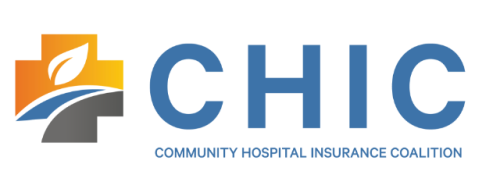IRS Changes Family Coverage Affordability Rules
Health FSA Limit Will Increase for 2023
Prescription Drug Reporting Due by Dec. 27, 2022
Employee Leave for Voting During Elections
IRS Changes Family Coverage Affordability Rules
On Oct. 11, 2022, the IRS released a final rule that changed the premium tax credit (PTC) eligibility rules for family members. This change is effective for taxable years beginning after Dec. 31, 2022.
The PTC is available to eligible individuals who purchase health insurance coverage through an Exchange. Individuals are not eligible for the PTC if they have access to employer-sponsored health coverage that is affordable and provides minimum value.
Effective for 2023, the final rule changes the PTC rules for determining whether employer-sponsored coverage is affordable for family members. Currently, this determination is based on the lowest-cost self-only coverage available to the employee. Under the final rule, an employer-sponsored plan is affordable for family members if the portion of the annual premium the employee must pay for family coverage (the employee’s required contribution) does not exceed 9.5% (as adjusted annually) of household income.
The final rule does not change the affordability rules for employees. Employees will continue to have an offer of affordable employer coverage if the employee’s required contribution for self-only coverage does not exceed 9.5% (as adjusted) of household income.
Additionally, this new guidance does not affect the Affordable Care Act’s “pay or play” penalties for applicable large employers (ALEs), as these penalties are triggered only when an employee receives a PTC, not a family member. According to the IRS, this new guidance also does not impact an employer’s reporting requirements under Internal Revenue Code Sections 6055 and 6056.
Health FSA Limit Will Increase for 2023
On Oct. 18, 2022, the IRS released Revenue Procedure 2022-38 (Rev. Proc. 22-38) to announce various inflation-adjusted tax limits for 2023, including the limit on employees’ salary reduction contributions to health flexible spending accounts (FSAs) offered under cafeteria plans.
Rev. Proc. 22-38 increases the health FSA dollar limit on employee salary reduction contributions to $3,050 for plan years beginning in 2023. This is a $200 increase from the 2022 health FSA limit of $2,850. Rev. Proc. 22-38 also increases the maximum carryover limit for a health FSA to $610 for 2023 (from $570 for 2022).
Employers should ensure that their health FSAs will not allow employees to make pre-tax contributions in excess of $3,050 for the 2023 plan year and communicate the 2023 limit to their employees as part of the open enrollment process.
An employer may impose its own dollar limit on employees’ salary reduction contributions to health FSAs as long as the employer’s limit does not exceed the IRS’ maximum limit in effect for the plan year. For example, an employer may decide to limit employee health FSA contributions for the 2023 plan year to $2,500.
Prescription Drug Reporting Due by Dec. 27, 2022
Employee Leave for Voting During Elections
As 2022’s Election Day approaches on Tuesday, Nov. 8, employers may be curious about how to best prepare. While federal law does not require employers to provide their employees time off to vote, many states have voting leave laws that allow employees to take time off to vote in certain circumstances. Further, employees may desire their employers to offer leave regardless of the applicable laws, so employers may choose to proactively plan for how to handle Election Day.
This article covers general information about state voting leave laws and employer considerations surrounding employee leave or time off for voting.
State Voting Leave Laws
Most states and localities have laws requiring employers to provide employees time off work to vote, even though no federal law requires this. Yet, if certain employees have enough time to vote during nonworking hours, they may not be eligible for leave.
The specifics vary by state, but many of these voting leave laws:
- Require the leave to be paid
- Impose a notice requirement on employees to provide their employers with notice of the leave
- Allow employers to designate the hours during which employees may be absent to vote
In addition, some states even have notice requirements where employers must post a notice regarding voting leave laws.
Employers should be aware of the voting leave laws that apply to them and be prepared to comply with any applicable requirements.
Employer Considerations
There are several ways employers can go about employee voting leave. One strategy is to provide time off to vote during Election Day. Even if this is not required in their state, employers may provide paid time off. Some employees may be seeking employers who offer time off or other flexibilities regardless of their state’s requirements and may seek employment somewhere that does.
Alternatively, employers can consider making Election Day a company holiday, if feasible, so everyone has the day off and can vote when they please. Employers may also consider providing their employees with information about early and absentee voting so that some employees may vote ahead of time and not need to take off work on Election Day. Employers should assess the various options and consider what works best for their organization and employees.
For More Information
Even though federal law does not require employers to provide leave to vote, many state laws do. As Election Day approaches, employers should review applicable laws and prepare to accommodate employees accordingly. If an organization has any specific compliance concerns surrounding employment law, it should seek local legal counsel. For additional information on voting, check out these federal resources: Voting and Elections in the United States and the U.S. Election Assistance Commission.


